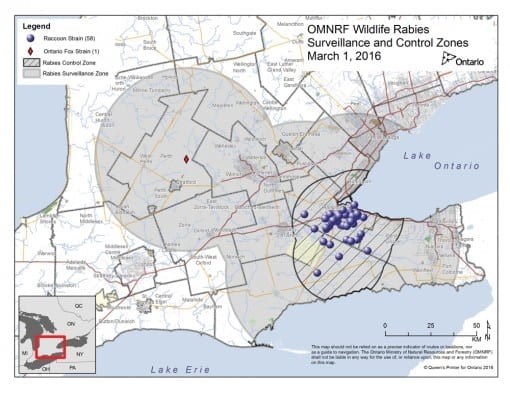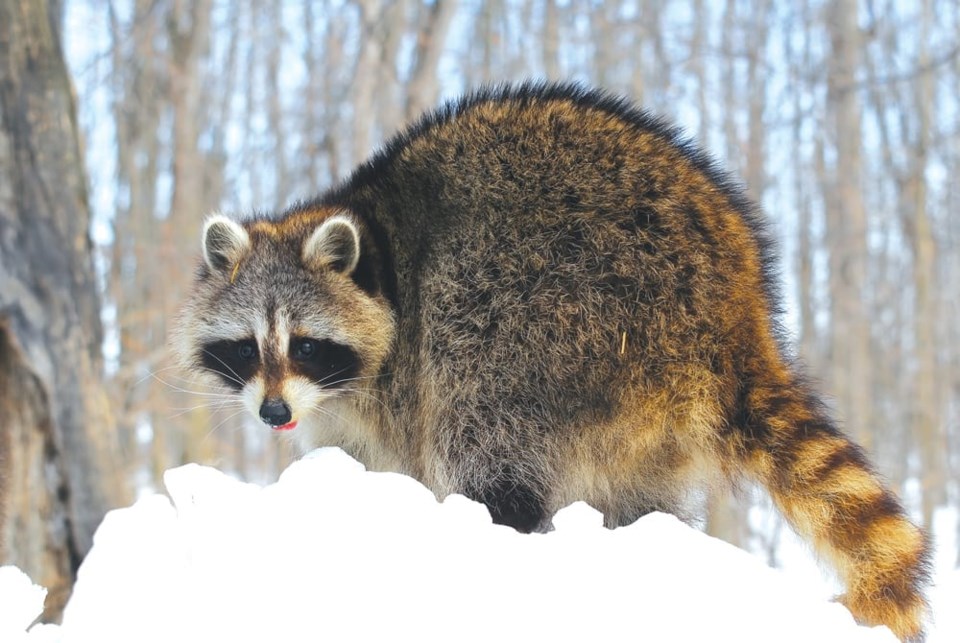Last week it was announced that a raccoon from the Caistor Centre area in West Lincoln tested positive for rabies. It is Niagara’s first ground-level rabid animal in over 25 years.
The find represents a slight push East toward Pelham from the outbreak’s epicentre in Hamilton, but remains well within the current Outbreak Control Zone.
Rabies outbreaks have become increasingly rare in Ontario, where programs exist to combat the spread of the disease by inoculating susceptible species with vaccine laden baits. The baits are dropped in areas, generally along the U.S border, where infected animals are most likely to cross into the province.
This most recent outbreak first came to the attention of Ministry officials in December of 2015, when a racoon tested positive for rabies in Hamilton. It is believed that the disease was carried into the city by an animal somehow brought in from the United States.
“The origin of this case is most likely a raccoon from the US being transported to the Hamilton area by a truck or train,” said Ministry of Natural Resources and Forestry representative Jolanta Kowalski. “Raccoon rabies then spread through the local raccoon and skunk populations.”
Since then, a total of 58 cases of raccoon rabies (42 raccoons and 16 skunks) have been confirmed in Hamilton and its bordering areas. According to Kowalski, the Caistor Centre finding is located well within the current control zone that Ministry officials baited in December. At this point, Pelham remains only a part of the ‘surveillance zone’, which is not being baited, but is being closely monitored.
“All strange acting wildlife that we can get from the surveillance area are tested for rabies,” said Kowalski.
When asked if unusually mild temperatures may have played a role in the outbreak, Kowalski stated that the warm weather may have actually helped contain it.
“Mild Temperatures are not to blame for the new occurrence of raccoon rabies in Ontario,” she said. “But the very warm winter did result in more raccoon activity than normal in December that allowed us to get baits distributed. We would not usually bait in December as in a normal winter raccoons and skunks would be in dens and would not have access to the baits.”
While every effort is being made to control the spread of the disease, history would indicate that the current outbreak may get worse before it gets better.
“We can’t say it has ‘peaked’ since this outbreak just started a few months ago and the animals then went into their dens,” said Kowalski. “The 1999 outbreak peaked in year three and then we had fewer cases in years four, five, and six.”
However, Ministry staff hope to rely on the lessons learned in the past, and utilize their vaccine baits, which were developed after the last outbreak, to keep the situation manageable.
“We have one of the most successful rabies elimination programs in North America,” said Kowalski. “We distributed almost 220,000 baits by December 31. We may do additional rabies vaccine bait drops in these areas in the spring as raccoons start to come out of their dens, and again in late summer, depending on the distribution of new cases.”




